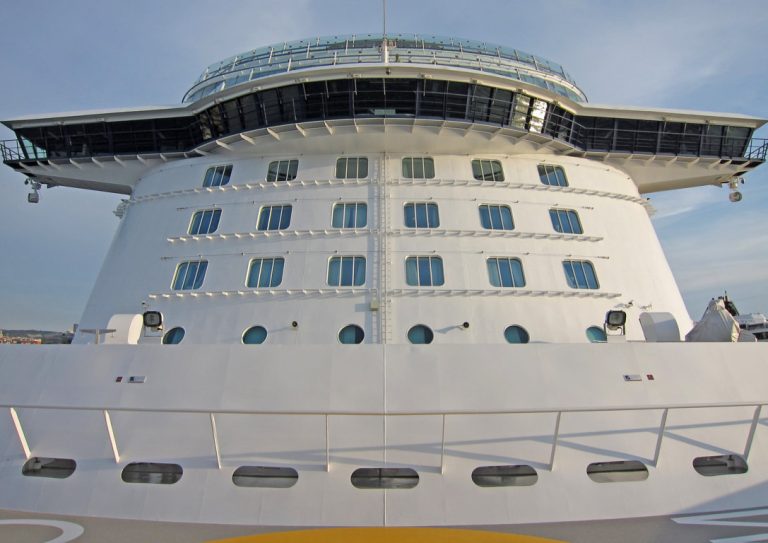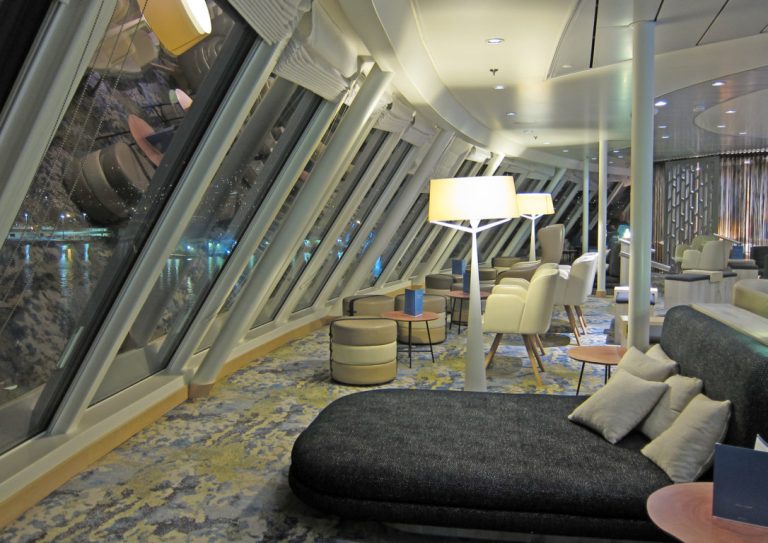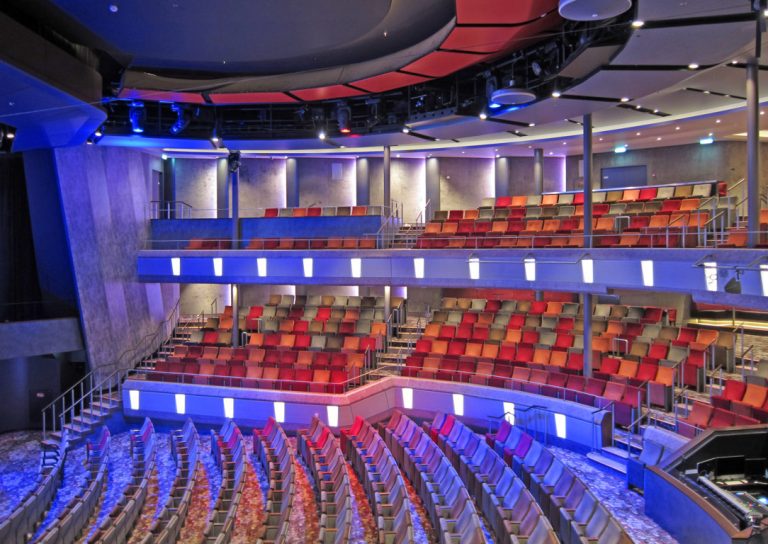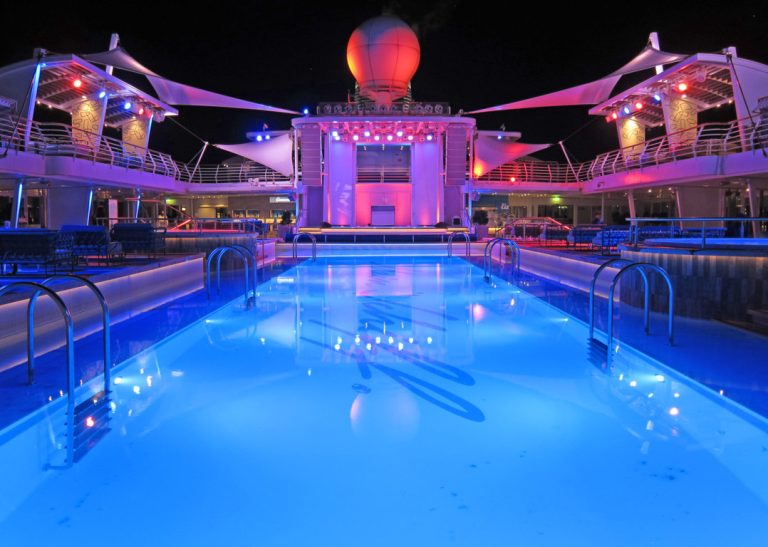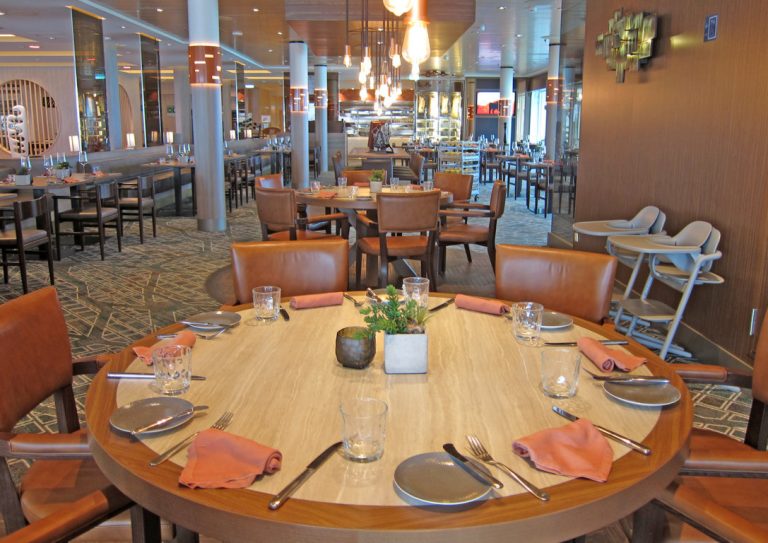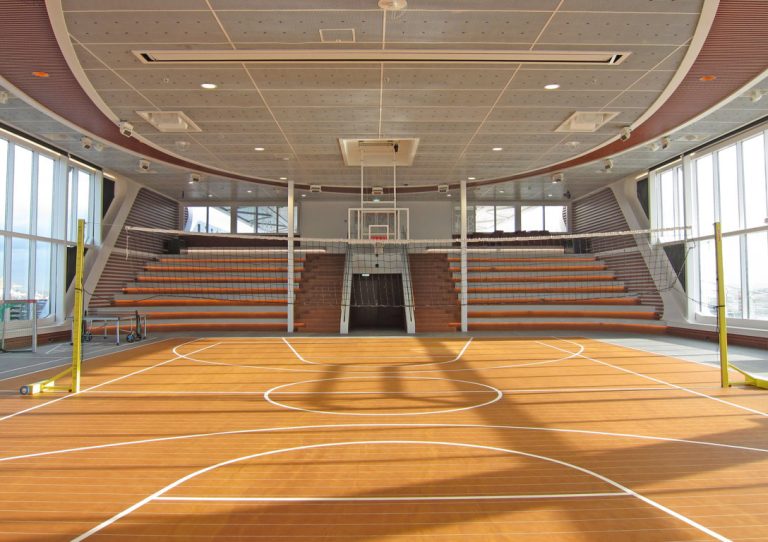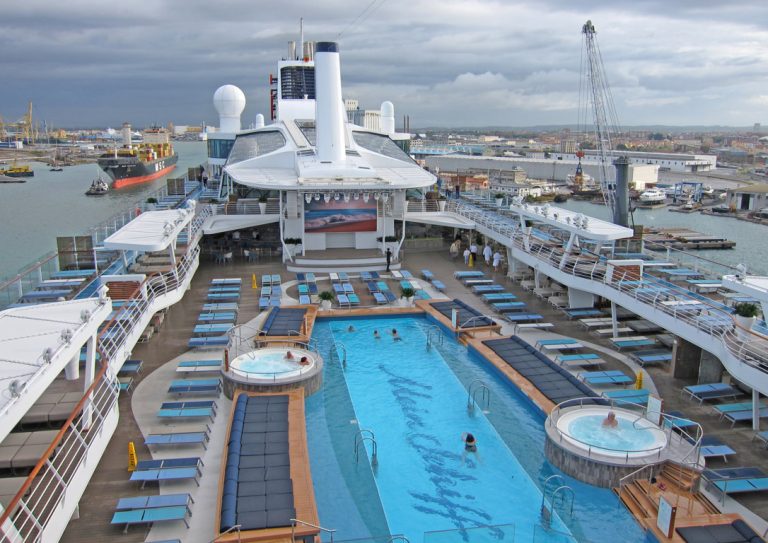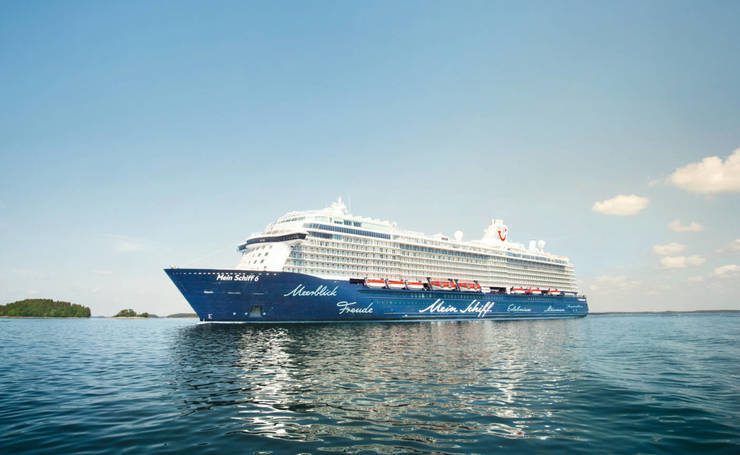From Mein Schiff 6 to Mein Schiff 7
Within just a few days, we had the chance to step aboard two of TUI Cruises’ famous “Blue Motion” class ships: the Mein Schiff 6 and the Mein Schiff 7. We visited the former in Trieste and the latter in Livorno.
Although they belong to the same class, the two ships are quite different from each other. In this article, we’ll take a closer look at both to discover their unique features and characteristics.
MS6
MS6
First of all, let’s recall that the “Blue Motion” is a successful class of ships consisting of seven units, all built by the Finnish shipyard Meyer Turku. Each one is named “Mein Schiff”, followed by a progressive number from 1 to 7. Since nothing can ever be too simple, it’s worth noting that their construction order doesn’t follow the numerical sequence: it began with “3”, then “4”, “5”, “6”, before going back to “1”, “2”, and finally “7”.
Therefore, Mein Schiff 6 and Mein Schiff 7 are not consecutive ships of the same class — there are two others between them. The first four ships were built on the original 295-meter platform, while the last three are an extended version measuring 315 meters. As a result, the ships we’re focusing on in this article differ first and foremost in their length, with Mein Schiff 7 being 20 meters longer than Mein Schiff 6. In terms of hotel features, the latter is better suited to warm climates, as all its pools are open-air, including the multipurpose sports court. Mein Schiff 7, on the other hand, boasts a beautiful indoor pool located forward of the funnel, as well as an enclosed sports arena. The onboard accommodation also differs significantly, so we’ll begin by describing the smaller of the two ships before moving on to the larger one.
But before we do, let’s take a brief look at their parent company, TUI Cruises. For those unfamiliar, TUI Cruises is a premium all-inclusive brand aimed at the German-speaking cruise market (Germany, Austria, and Switzerland). It was established as a 50/50 joint venture between the Royal Caribbean Group and TUI, the German tourism giant. The company has grown rapidly thanks to its ambitious newbuild program — initially with the Finnish shipyard Meyer Turku and now with Fincantieri. The latter delivered the new flagship Mein Schiff Relax in Monfalcone this past February, which will be followed next year by her sister ship, Mein Schiff Flow.
MS6
MS6
Recently, TUI Cruises announced its intention to open up more to the international market—which currently accounts for only about 4–5% of its passengers. This is part of a long-term process aimed at transforming the brand into a truly “European” one. However, during our visits on board, we still found a clear predominance of German-speaking guests.
I think we’ve kept you in suspense long enough—so it’s time to take a closer look at the Mein Schiff 6. Entering service in 2017, she has a gross tonnage of 98,785 GT, measures 295.26 meters in length and 35.80 meters in beam. She offers 1,267 passenger cabins and can accommodate 2,534 guests (based on double occupancy), served by 1,030 crew members. Her diesel-electric power plant consists of two Wärtsilä 12V46F and two 8L46F engines, providing a total installed power of 48 MW. Propulsion is ensured by two ABB electric motors, each rated at 14 MW, driving two fixed-pitch propellers that allow the ship to reach a top speed of 21.7 knots. For maneuvering, she is equipped with three bow thrusters and two stern thrusters.
The ship features 12 passenger decks, offering a wide range of restaurants, bars, and services, all included in the cruise fare. As mentioned earlier, TUI Cruises is a premium brand distinguished by its all-inclusive service—meaning the fare truly covers everything a guest could desire. What’s the ship’s standout feature? The first thing worth mentioning is the spectacular 25-meter outdoor pool, the longest in the entire cruise industry.
Although everything is included on board, guests seeking an even more exclusive experience can access the X-Lounge and its private sun deck—a VIP area designed for those who wish to enjoy the atmosphere of a luxury yacht in total privacy. The main public areas are located on Decks 4 and 5. There’s a large theater spanning three decks, plus a second, two-level lounge theater dedicated to live music. The main atrium, located midship and extending over three decks, hosts the well-known “Tag & Nacht” bistro, where guests can eat and drink 24 hours a day (naturally included in the fare). This complements the large buffet restaurant on Deck 12. Next to the “Tag & Nacht,” guests will find the “Osteria,” perfect for pizza and pasta lovers. There are two main dining rooms, while the specialty restaurants are primarily located aft on Deck 5, including the Japanese restaurant (Hanami), the Austrian restaurant (Schmankerl), and, of course, the classic steakhouse (Surf & Turf).
MS6 (2)
MS6
But what distinguishes these “made in Germany” cruises aboard Mein Schiff 6? Certainly the unisex wellness center (with a wide range of saunas and steam baths always included in the cruise price) and the small casino — since, in Goethe’s homeland, gambling is apparently not all that popular.
Let’s conclude with the story of its creation: the first steel plate was cut in Turku on August 21, 2015; the laying of the first hull section in the dock took place on April 25, 2016; the technical launch (float-out) occurred on January 3, 2017; the ship was delivered to the owner on May 9, 2017; and finally, it was christened on June 1 of the same year in Kiel, with Iveta Apkalna as the godmother.
And now let’s move on to the Mein Schiff 7, the latest — and certainly the most beautiful — ship of this class. It embodies all the know-how accumulated over roughly ten years since the delivery (2014–2024) of the first vessel in the “Blue Motion” class, the Mein Schiff 3.
First and foremost, Mein Schiff 7 is the first ship in the series to be designed for methanol propulsion, in addition to low-emission marine diesel. It is the first vessel built by the Meyer Turku shipyard with a dual-fuel MGO/methanol system, making it a “methanol-ready” ship. The vessel is designed to run on both conventional methanol and, in the future, green methanol — as part of the transition toward low-emission sailing. In this way, the ship serves as an experiment by TUI Cruises in the use of alternative fuels, aligning with the “carbon neutral” goal for the maritime sector set by the IMO for 2050.
MS7
MS7
But now let’s start with her “measurements”: she has a gross tonnage of 112,982 tons, is 315.70 meters long, and 35.8 meters wide. Special attention in the ship’s design was devoted to energy efficiency, achieving improvements compared to her sister ships. She offers 1,461 cabins capable of accommodating 2,894 passengers on a double-occupancy basis, served by 1,100 crew members.
As mentioned, MS7 represents the latest evolution of the prototype. Passenger capacity has been increased with the addition of a new hull section and two extra forward decks that house a larger “X-Lounge” with more amenities. The iconic 25-meter pool has, of course, been retained, while the main novelty is the covered pool, which makes the ship ideal even for colder climates. The wellness center has also been redesigned: the gym has been moved to Deck 15, freeing up more space on Deck 12 for treatments, although a small part of the spa still remains on Deck 11. Due to the reconfiguration of Deck 12, a new bar (Ruhepol) has also been added at the bow.
Thanks to the lengthening of the hull, Deck 5 now features the Café Central, which is not found on MS6. However, the area that underwent the most significant changes is the aft section between Decks 4 and 5, where the specialty restaurants are located. The most intense design work by the architects at Tillberg Design of Sweden focused on the ship’s iconic “glass diamond,” located at the stern of the superstructure, where a two-deck atrium offers vast open spaces and multi-level restaurants. Named “Große Freiheit,” after the famous street in Hamburg’s entertainment district, Tillberg transformed this space into an Italian-style piazza, with a ceramic mosaic floor and a design that evokes an outdoor atmosphere. The effect is enhanced by a golden Vespa parked in the square and comfortable outdoor-style armchairs, giving the restaurant La Spezia a true sense of Italian life.
MS7 (5)
MS7 (2)
MS7
On Deck 5, Tillberg created a radically different sense of style for the Hideki restaurant, which captures the essence of Asian cuisine. Traditional wooden beams are combined with rice paper lanterns and an organically patterned carpet to add atmosphere, while the space is divided into many smaller areas. On the opposite side, the beloved Surf & Turf steakhouse remains a staple—though it too has been redesigned (in my opinion, the best specialty restaurant on the ship).
Tillberg was also responsible for designing the single cabins, a completely new feature within the TUI Cruises fleet (later replicated in the following InTUItion class), created to meet the growing demand from solo travelers. Located on Deck 4, the 26 single cabins (12 inside and 14 outside) each measure 8 square meters. Their design is closely aligned with that of the ship’s standard cabins: soft blue wall panels, bleached oak furniture, and carpeting with flowing lines reminiscent of sand dunes. But beyond the appealing visual elements, much effort was devoted to ensuring that the design was as sustainable as possible.
To conclude, it’s worth remembering that the construction of Mein Schiff 7 was delayed due to the pandemic: the first keel section was laid on March 21, 2023, the technical launch took place on December 1 of the same year, and final delivery occurred on June 11, 2024—marking the end of the “Blue Motion” class era for the Meyer Turku shipyard.
Don’t miss news, updates, and reviews of TUI Cruises on Cruising Journal, complete with photos, videos, and special cruise offers.


